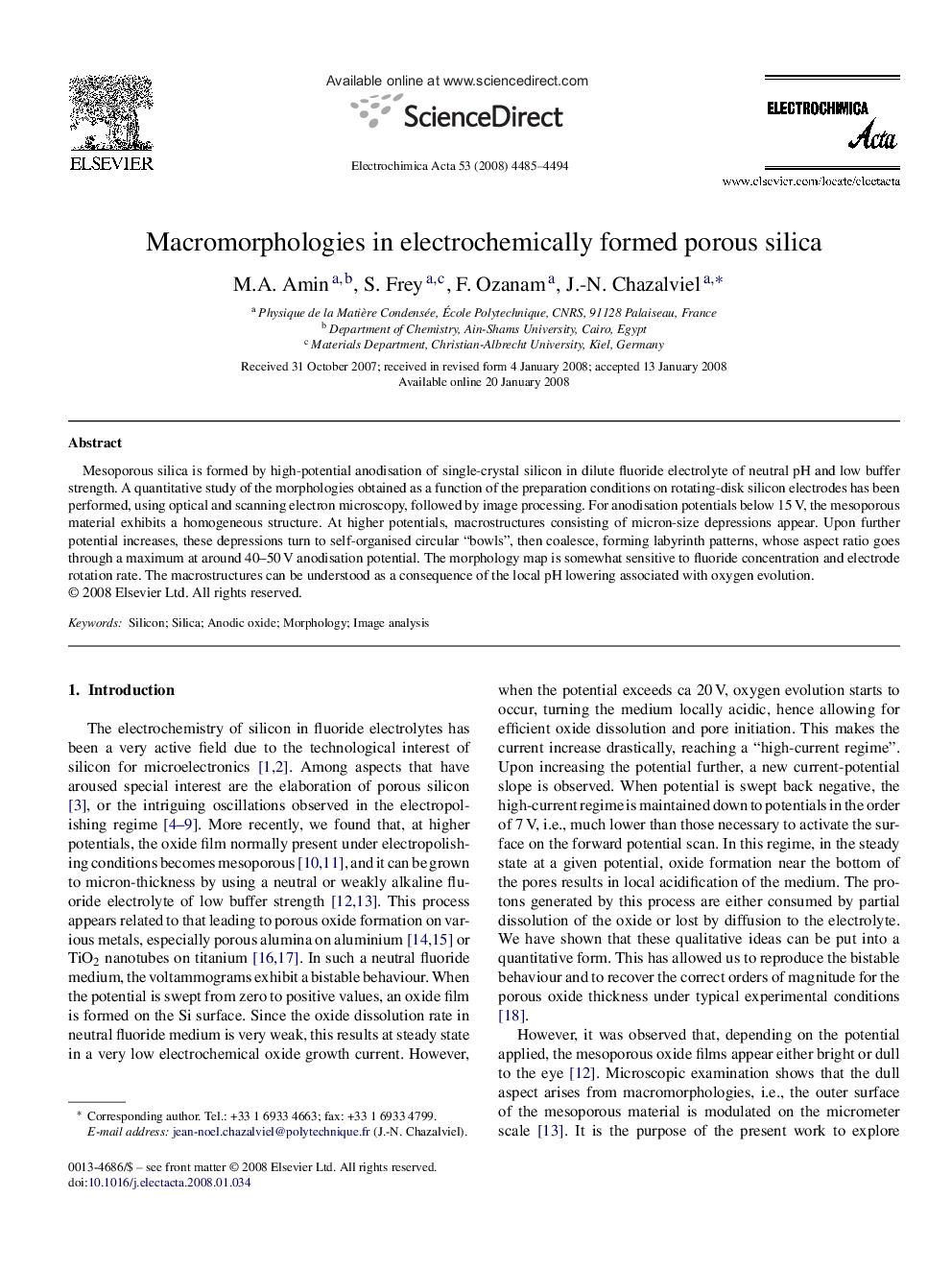| Article ID | Journal | Published Year | Pages | File Type |
|---|---|---|---|---|
| 192526 | Electrochimica Acta | 2008 | 10 Pages |
Mesoporous silica is formed by high-potential anodisation of single-crystal silicon in dilute fluoride electrolyte of neutral pH and low buffer strength. A quantitative study of the morphologies obtained as a function of the preparation conditions on rotating-disk silicon electrodes has been performed, using optical and scanning electron microscopy, followed by image processing. For anodisation potentials below 15 V, the mesoporous material exhibits a homogeneous structure. At higher potentials, macrostructures consisting of micron-size depressions appear. Upon further potential increases, these depressions turn to self-organised circular “bowls”, then coalesce, forming labyrinth patterns, whose aspect ratio goes through a maximum at around 40–50 V anodisation potential. The morphology map is somewhat sensitive to fluoride concentration and electrode rotation rate. The macrostructures can be understood as a consequence of the local pH lowering associated with oxygen evolution.
